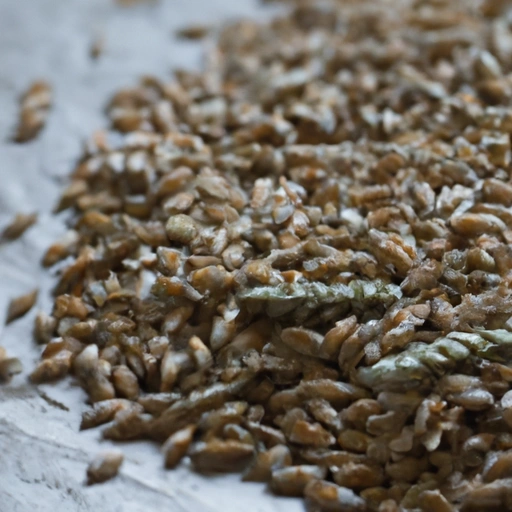Rye
Description

Rye is a cereal grain that's closely related to wheat and barley. It's known for its hardy nature, allowing it to thrive in a wide range of climates, making it a staple crop in many parts of the world. Rye is versatile in the kitchen and can be used in various forms such as whole rye berries, rye flakes, rye flour, and rye meal. It imparts a distinctive, deep flavor that's often described as earthy, slightly sour, and robust. Rye is a common ingredient in bread, particularly in Europe and America, and is frequently used in sourdough recipes.
Common uses
Common uses of rye range from baking to brewing. It is a primary ingredient in rye bread, including the dense, dark pumpernickel, and is often mixed with wheat flour to create lighter rye bread varieties. In addition to bread, rye is used in crackers, crispbreads, and other baked goods. Furthermore, rye grains are used to produce whiskey, particularly in the United States, where it is the key ingredient in rye whiskey.
Nutritional value
Calories
Whole grain rye contains approximately 338 calories per 100 grams (about 3.5 oz).
Protein
Rye is a good source of protein, offering about 10 to 14 grams per 100 grams (3.5 oz).
Fat
Rye contains a minimal amount of fat, at about 1.6 grams per 100 grams (3.5 oz).
Carbohydrates
It is rich in carbohydrates, with around 69 grams per 100 grams (3.5 oz).
Vitamins
Vitamins in rye include several B vitamins, such as niacin, riboflavin, and thiamine.
Minerals
Rye is a good source of essential minerals including magnesium, phosphorus, and zinc.
Health benefits
Rye is recognized for its high fiber content, contributing to better digestion and a reduced risk of heart disease. Its low glycemic index makes it suitable for managing blood sugar levels, and the presence of antioxidants may help in preventing certain types of cancer.
Potential risks
For individuals with gluten intolerance, such as those with celiac disease, rye should be avoided as it contains gluten. Overconsumption of rye, particularly in unprocessed forms, might lead to bloating and an uncomfortable feeling of fullness.
Common recipes
Rye is a staple in recipes for rye bread, sourdough, and multigrain loaves. It's also used in the making of traditional European rye-based dishes such as Russian black bread and Scandinavian crispbread.
Cooking methods
Rye grains can be cooked similar to other whole grains, boiled or simmered until tender. Rye flour is used in baking, particularly in bread-making where it's often combined with wheat flour to aid in rising.
Pairing with other ingredients
Rye pairs well with strong flavors like caraway seeds, cheese, smoked meats, and pickled vegetables. Its robust taste also complements sweet ingredients such as molasses and chocolate.
Summary
Rye is an ancient grain esteemed for its hearty flavor and adaptability in a variety of culinary applications, from traditional European bread to American rye whiskey. With substantial health benefits, such as aiding digestion and managing blood sugar levels, rye is a nutritious addition to any diet. However, those with gluten sensitivities should steer clear of rye-containing products. Whether used in hearty bread, paired with strong flavors, or enjoyed in a glass of whiskey, rye offers a unique taste that has been cherished around the world for centuries.